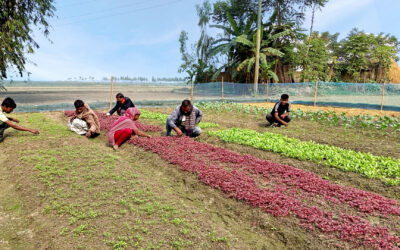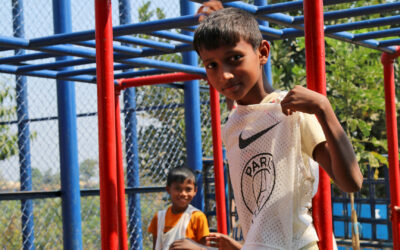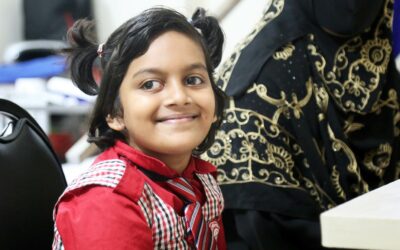Friendship’s solar micro-grid on a remote sandbar island could serve as a renewable energy model for other hard-to-reach communities in Bangladesh
by NAUSHAD ALI HUSEIN
August 31, 2021
Since 2000, Bangladesh has gone from 32% of the population having access to electricity to 93% in 2019. The country is targeting 100% electrification this year, but geography is a challenge.
On August 22, Friendship inaugurated a 54-kilowatt solar micro-grid that will serve as a pilot project that could provide a model for the electrification of the remaining unconnected areas, such as the constantly moving char landscapes—made of sandbar islands on the Jamuna-Brahmaputra river.
“Anyone who has seen the mighty River Jamuna when it is in spate (at full strength), will understand that grids are really not possible here,” said Runa Khan, founder and executive director of Friendship at the inauguration of the Solar Village. “This can be part of the solution of the government to bring electricity to all.”
An alternative energy solution
Bangladesh has tried a few solutions to electrify the chars. In 2020, the government announced a 12-million-euro project to connect 26,000 families in Gaibandha district through submarine cables. Downriver from the district’s main ghat, miles of newly installed electric cables can be seen today stretching across the river channels. However, it is difficult to predict what will happen over the years as the river reshapes the land and the riverbed.
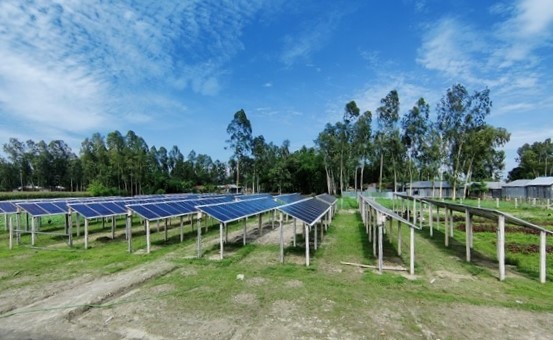
“These solutions are costly and difficult to maintain in an area where the landscape is constantly changing,” said Kamal Uddin, director of Sustainable Economic Development at Friendship. “The cost of reconnecting an entire village, which has shifted to a different location due to erosion would be astronomical.” On the moving islands of the Jamuna-Brahmaputra rivers, it isn’t uncommon for an entire village to be eroded away by the river in the space of a season, or even a few days.
This is why Friendship’s solar micro-grid in Goynar Potol char, in the district of Kurigram; the first of its kind on the chars, is ground-breaking. “The grid is cost-efficient, and it is designed to withstand floods, and the whole project can be dismantled and relocated with relative ease,” said Kamal.
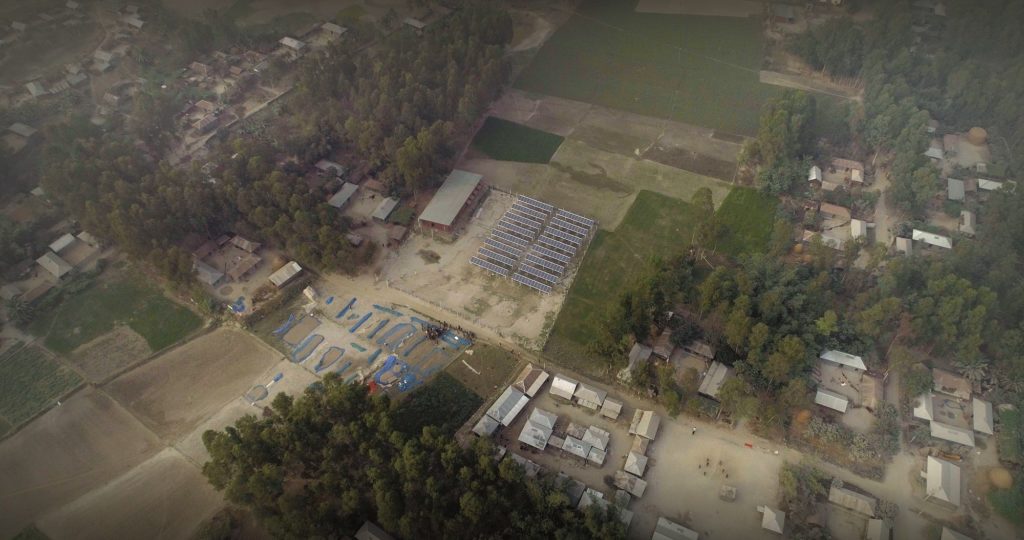
As sure as the rising sun
In many rural areas, connectivity doesn’t mean that residents have access to electricity all the time. In fact, some areas connected to the grid have only a few hours of electricity all day. But as sure as the sun rises in the east, residents of the solar village will have electricity throughout the day and most of the night. And since the source of energy is the sun, the emissions involved are much lower than those of the national power grid.
State Minister for power, energy and mineral resources, Nasrul Hamid, MP, chief guest of the inauguration, pointed out that the Sustainable Development Goals call for increasing the proportion of energy coming from renewable sources in each country. “This effort is very congruent with the target of 100% electricity coverage by the end of the Mujib year (the centenary year of the Father of the Nation, Sheikh Mujibur Rahman). It is also congruent with the target of achieving 40% of energy from renewable energy sources by 2041.”
He also said, “our mainstream transmission networks sometimes cannot reach these kinds of areas. So, it is indeed an extraordinary endeavour to get to these disadvantaged people, to ensure their inclusion in the power supply.”
Deputy CEO Barrister Shameem Haider Patwary, MP, and CFO SM Monirul Islam of Infrastructure Development Company Limited (IDCOL) also attended the inauguration as special guests.
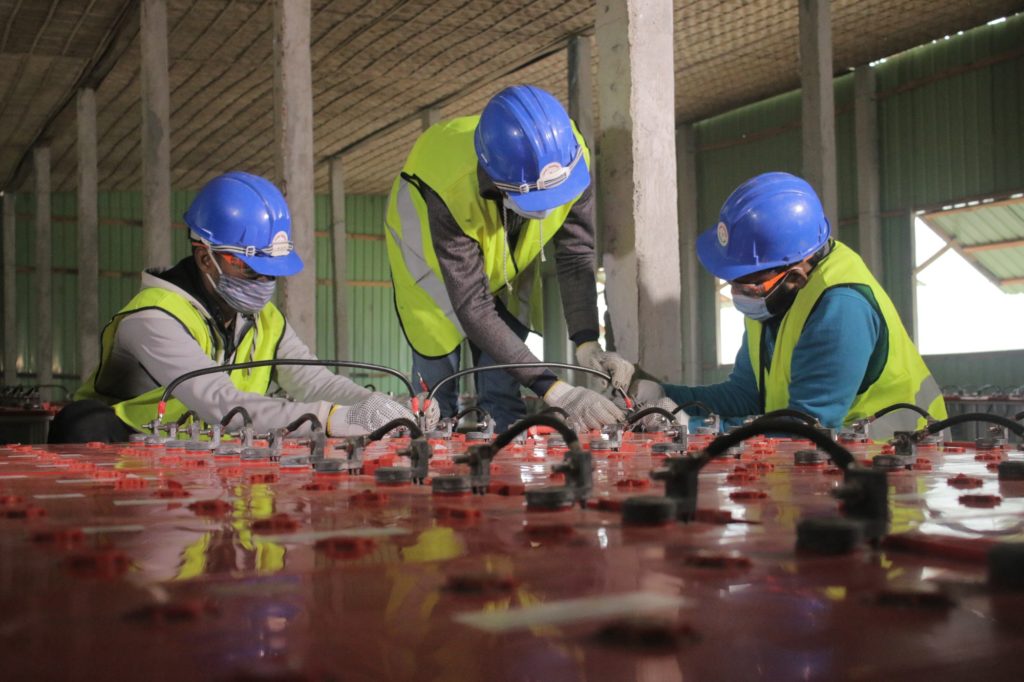
The power to do more
“This grid provides income generating opportunities and livelihoods, opportunities for children’s education,” said Runa Khan. She added that electricity also contributes to the security in the village, for example by preventing burns and other health impacts from kerosene lamps, and by providing light in the evenings. It eases communication by allowing villagers to charge their devices at any time.
“It was difficult to do anything in the darkness,” said Jotsna Begum who addressed the inauguration online from Goynar Potol. “I couldn’t get my children to study. Kerosene fumes would always get into our food.”
“The light of the cities is now in our homes, and this makes us very glad,” said Rezaul Karim Mydul, another resident of the solar village. “We used to get light from kerosene lamps or small individual solar panels for our homes, which provided inadequate light. The kerosene lamps were risky and unhealthy.”
A system based on solidarity
Many households in the char already have small Solar Home Systems installed by Friendship, but besides being more expensive, they are often sub-optimally exposed to the sun (due to shade caused by large eucalyptus trees) and insufficient to cover the households’ demands.
Each of the 100 households connected to the grid have enough wattage to power six lamps, two pedestal fans, a TV and a cell phone charger. The microgrid also powers 24 shops in the local market, a Friendship Primary School, Friendship Legal Booth, a mosque and a flood shelter. Shops will have enough power for appliances such as refrigerators. On sunny days, the surplus electricity will power irrigation pumps.
Patrick Losch, director of Friendship International and a consultant to the project, said that the Solar Village is the culmination of a decade of working on the electrification of remote rural areas in Bangladesh. The project was supported by Engie Foundation, not only as the donor, but also with technical support, and by helping build the core capacity to run the project.
He said the aim of the project was to include the poorest people so that no one is left behind, because electricity enables self-development.
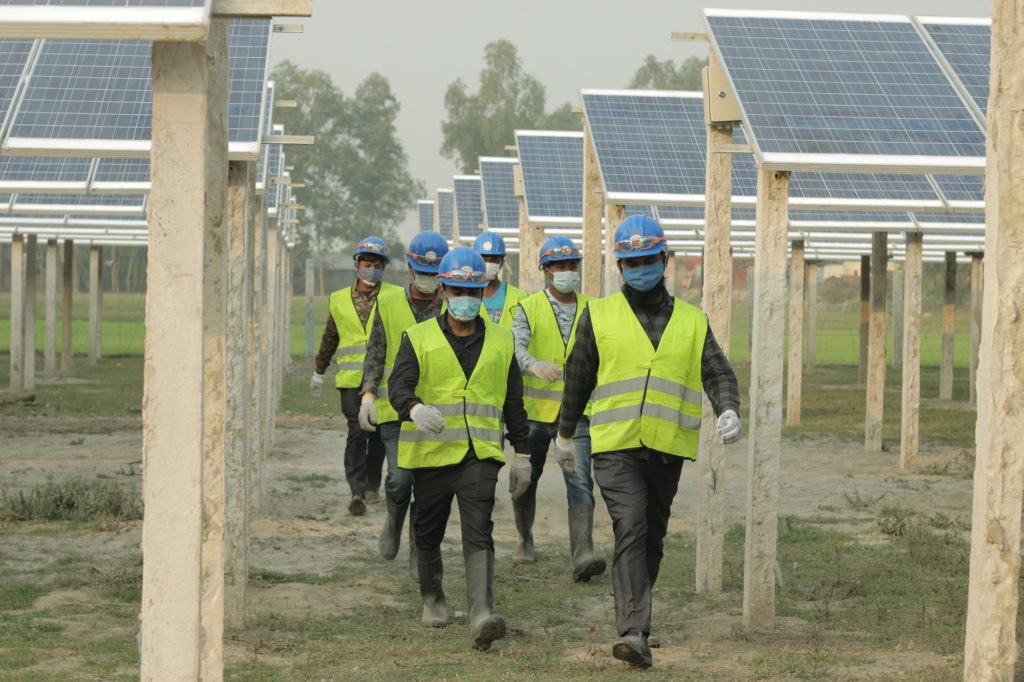
“The system is working on the basis of solidarity,” said Patrick. “Those who have more income can buy more electricity and they can reach a higher level of comfort, [which is] difficult to achieve with the solar home system. But by doing so they make the whole system work. And those who have very little income can buy less at a price they can afford.”
Md. Zakir Hossain, MP, State Minister for primary and mass education, who hails from the char areas, attended the inauguration as a special guest. He said he was optimistic that with its partners, the government would be able to extend access to electricity to 100% of the population. “I believe that if all over Bangladesh, we were to work the way Friendship is working here, side-by-side with the government, we can together make the Bangabandhu Sheikh Mujibur Rahman’s dream of a Golden Bengal come true.”


